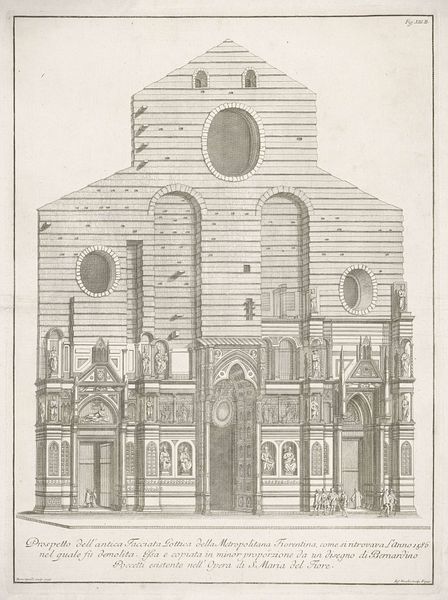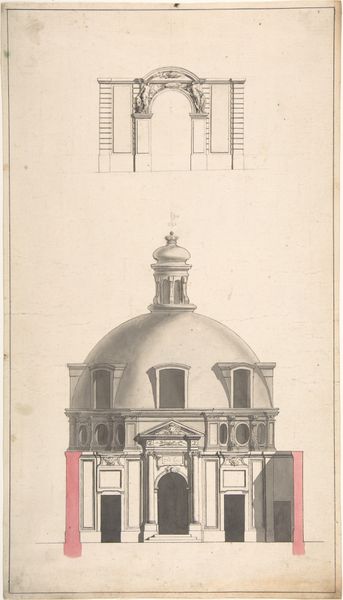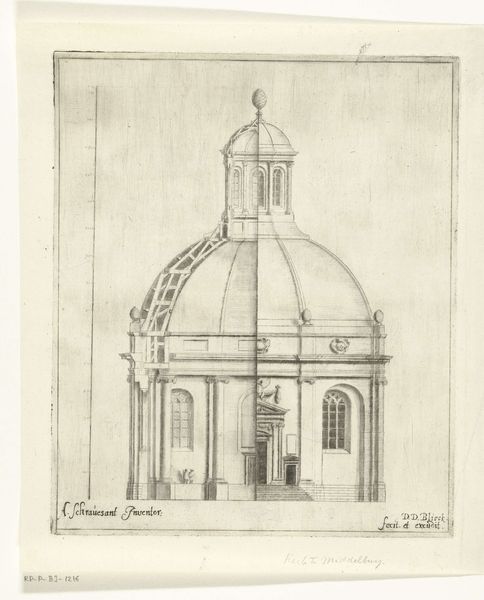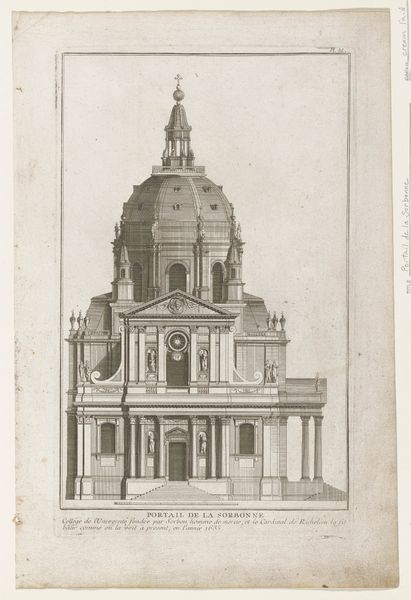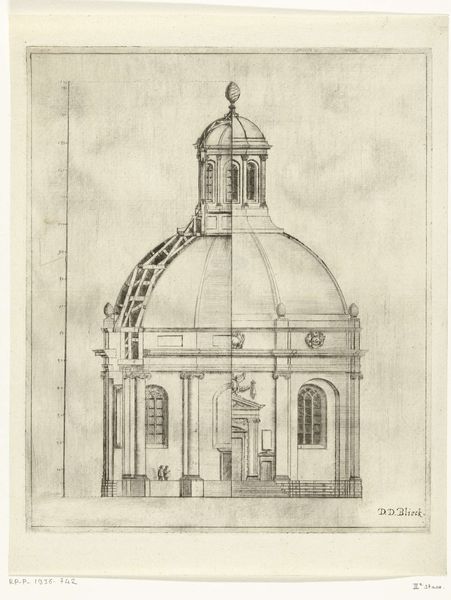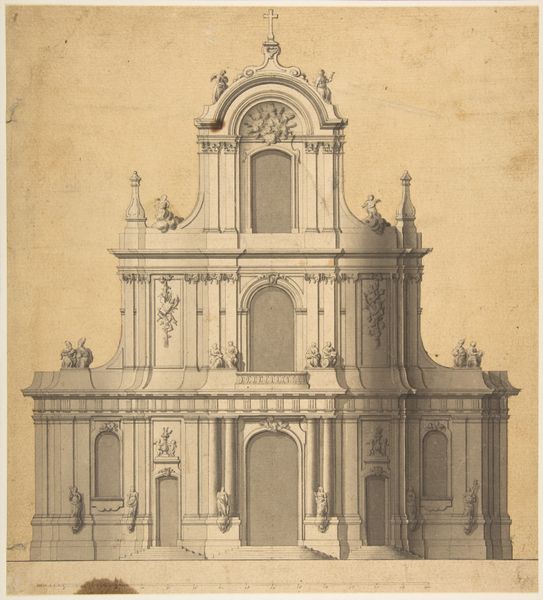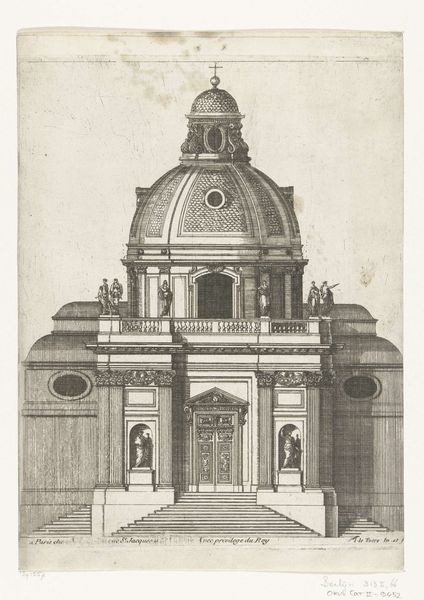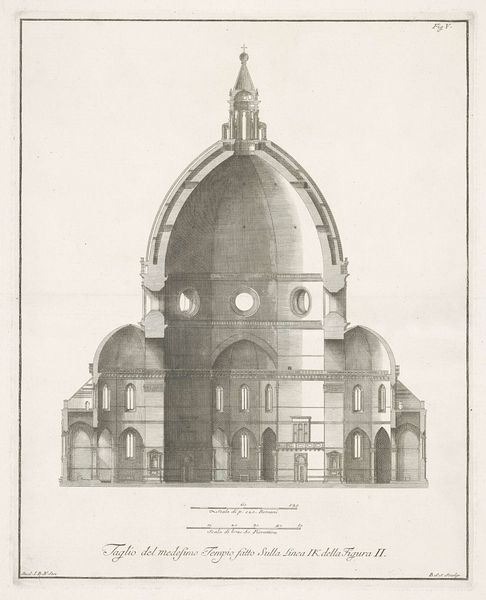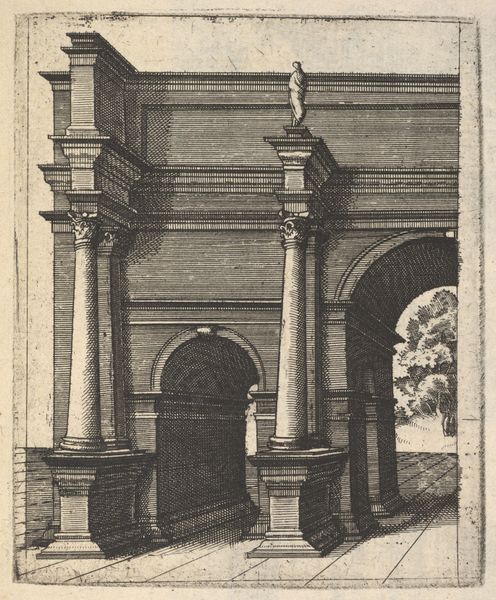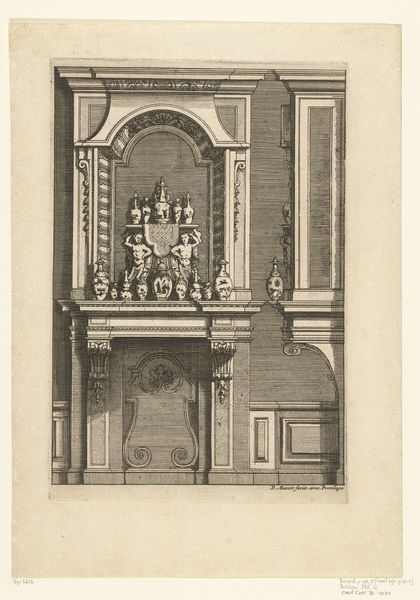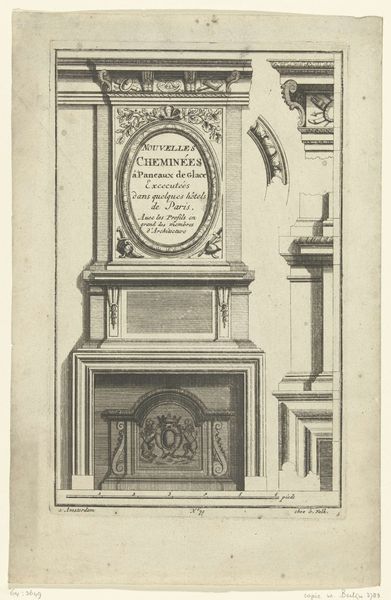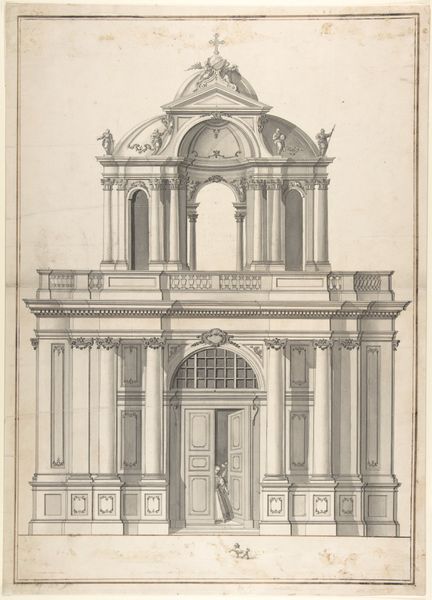
print, etching, engraving, architecture
#
baroque
# print
#
etching
#
pencil sketch
#
line
#
cityscape
#
engraving
#
architecture
Dimensions: height 80 mm, width 115 mm
Copyright: Rijks Museum: Open Domain
Abraham Rademaker made this print of St. Martinikirche in Emmerik, using etching and engraving techniques sometime before 1735. Look closely, and you will see a dense, rhythmic pattern of fine lines, a testament to the engraver’s skill, incising an image into a copper plate. A stylus, or burin, would have been pushed through the metal with considerable force to create tiny furrows, which would then hold ink. The plate is then pressed onto paper, and we have the image. This print is one of many produced during this period. The etching and engraving processes are part of a much wider culture of printmaking, which allowed images to be circulated widely and relatively cheaply. They democratized the visual landscape, making it available to a wider public than ever before. It's a reminder that even seemingly straightforward images are products of complex technical processes, and that their value lies not only in what they depict, but in how they are made and disseminated.
Comments
No comments
Be the first to comment and join the conversation on the ultimate creative platform.
